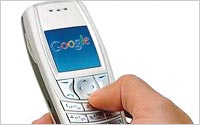
Attribution modeling analyzes how different types of advertising -- such as mobile, display, email and search -- can influence a consumer's
decision to make a purchase. Few insights are available for mobile, but experts believe it runs like a parallel thread alongside the conversion path, connecting all media, which puts a strain on
companies that insist on budget silos.
When it comes to email campaigns for the travel industry, the media drives a 56% lower average order value (AOV) and takes more than 250% longer to
convert when run independently. Conversely, paid search can prompt consumers to spend more money, according to research scheduled for release next week.
In fact, the IgnitionOne research finds
that paid search drives a 71% higher AOV, compared with other channel paths. When paid search follows an organic search click, the AOV is 18% higher than the average multichannel path.
advertisement
advertisement
Alone,
display ads drive a 29% higher AOV than other single-channel paths. Combined with search channels, both paid and organic, it drives a 16% higher AOV when it’s at the top of the path and converts
users 43% faster than other multichannel paths.
At the end of the path, latency tends to rise, but AOV is 36% higher than other multichannel paths.
Just as marketers seem to grasp the
concept of attribution, in comes mobile advertising -- of which search held 14% of total search advertising investments in Q2, up 12.3% sequentially, according to IgnitionOne. Tablet devices accounted
for 60% of the total mobile search advertising budget for the quarter.
Mobile, the newest addition to the conversion path, presents challenges mainly because marketers don't want to lose
consumers en route.
Kerri Smith, director of mobility at iProspect, said the company helps clients assign dollar values to mobile all along the funnel, based on several factors used to
determine the lifetime value of a customer -- a tactic the electronics industry uses to determine retail prices for hardware.
Brands typically have their own method of success, but for mobile
attribution, marketers need a bit of structure. In a Google interview, Smith points to an equation that allows iProspect to measure the likelihood of an actual conversion. It let marketers quantify a
return where one-to-one measurement can become difficult, and to understand the impact the channel has on the brand’s business.
Smith explains that knowing the average phone call
duration, which indicates a level of interest, along with the agent conversion rate, can help a brand formulate the equation. The six-minute call duration equals an interested consumer, agents convert
30% of interested consumers, and interested consumers * 30% equals the number of conversions.
Smith explains that retail brand marketers have been the first to adopt micro-conversions,
especially for location-based responses, due "to the known 'intent to visit' derived from these and previous testing." Coupons measure the revenue in stores from mobile, giving retailers a way to see
and prove the value.
Through this process, iProspect helped a client work with Google to run a two-month test of Mobile App Extensions. During the test, Smith said the agency disabled all
sitelinks, location extensions and product extensions to focus on driving app downloads. The test showed 92 downloads, 89:1 ROI, and a 334% lift in ROI when attributing value to app downloads.
Smith said "mobile is the channel that connects all others. It doesn’t fit in the traditional conversion funnel -- it runs alongside it, involved every stage." Brands that continue to segment
media channels will not gain the insight required to add mobile attribution to the mix.